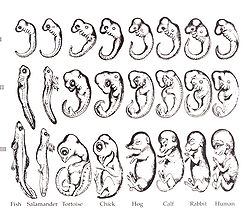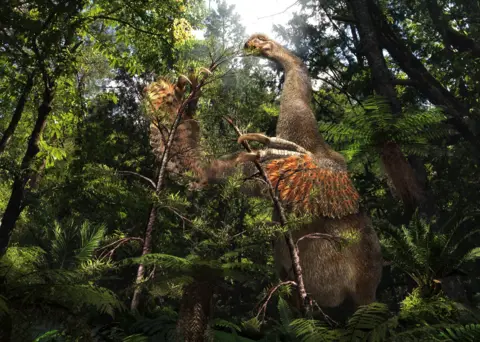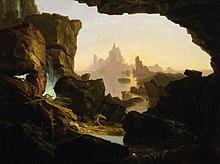According to the biblical narrative, Jonah was swallowed by a “great fish” (Jonah 1:17 ESV), and spent three days and three nights in its belly before being spat out, unharmed. However, skeptics have long dismissed the tale as fantastical, citing physiological impossibilities. Could Jonah have been swallowed by a whale, or a “great fish”?
A very modern event reminds us not to be too quick to dismiss Biblical accounts as fictional. The BBC reports:
‘I felt a slimy texture brush my face’: Man describes being swallowed by whale”
Andrea Díaz & Ayelén Oliva
BBC Mundo, February 14,2025
Watch: The moment kayaker Adrián Simancas is nearly gulped down by a whale
The first thing kayaker Adrián Simancas noticed after he was eaten by a whale was the slime.
“I spent a second realising I was inside the mouth of something, that maybe it had eaten me, that it could have been an orca or a sea monster,” the 23-year-old told BBC Mundo.
Adrián had started to think how he might survive inside the humpback whale “like Pinocchio” – then the creature spat him back out.
The Venezuelan kayaker had been paddling through the Strait of Magellan, off Chile’s Patagonian coast, with his father when he felt something “hit me from behind, closing in on me and sinking me”.
His father, Dell, was able to capture the short-lived ordeal on video just metres away.
“I closed my eyes, and when I opened them again, I realised I was inside the whale’s mouth,” Adrián told the BBC.
“I felt a slimy texture brush my face,” he recalled, adding that all he could see was dark blue and white.
“I wondered what I could do if it had swallowed me since I could no longer fight to stop it,” he said.
“I had to think about what to do next.”
But within seconds, Adrián started to feel as though he was rising toward the surface.
Adrián Simancas, a 23-year-old Venezuelan, dressed in a colourful, striped poncho.
Adrián Simancas was kayaking when he was nearly swallowed by a humpback whale
“I was a little afraid of whether I would be able to hold my breath because I didn’t know how deep I was, and I felt like it took me a long time to come up.
“I went up for two seconds, and finally I got to the surface and realised that it hadn’t eaten me.”
In a nearby kayak, Adrián’s father Dell Simancas watched on in disbelief.
The pair had just crossed Eagle Bay – down the coast from Punta Arenas, Chile’s southernmost city – when he heard a crash behind him. “When I turned around, I didn’t see Adrián.”
“I was worried for a second, until I saw him coming up out of the sea,” the 49-year-old said.
“Then I saw something, a body, which I immediately interpreted as most likely being a whale because of its size.”
Dell had fixed a camera to the back of his kayak to record the rising waves – which captured his son’s remarkable experience.
Watching the footage back, Adrián – who moved with his father to Chile from Venezuela seven years ago in search of a better quality of life – was shocked to see just how enormous the whale had been.
“I hadn’t seen the moment when the back appears, and the fin is visible. I didn’t see it, I heard it. That made me nervous,” he said.
“But later, with the video, I realised that it actually appeared before me in such a huge size that perhaps if I had seen it, it would have scared me even more.”
‘Physically impossible to swallow’
For Adrián, the experience was not just about survival – but he said felt he had received a “second chance” when the whale spat him out.
The “unique” experience in one of the most extreme places on Earth had “invited me to reflect on what I could have done better up until that point, and on the ways I can take advantage of the experience and appreciate it as well”, he added.
But there is a simple reason he was able to escape the whale so quickly, according to a wildlife expert.
Humpback whales have narrow throats “about the size of a household pipe” designed for swallowing small fish and shrimp, Brazilian conservationist Roched Jacobson Seba told the BBC.
“They physically cannot swallow large objects like kayaks, tires, or even big fish like tuna,” he said.
“Ultimately, the whale spit out the kayak because it was physically impossible to swallow.”
The humpback whale likely engulfed Adrián by accident, Mr Seba suggested.
“The whale was likely feeding on a school of fish when it unintentionally scooped up the kayak along with its meal.
“When whales surface too quickly while feeding, they can accidentally hit or engulf objects in their path.”
He warned that the encounter served as “an important reminder” to avoid using paddleboards, surfboards or other silent vessels in areas where whales usually swim.
Boats used for whale watching and research must always keep their engines on, he added, as the noise helps whales detect their presence. read more

 Many alligators live in the Florida Everglades.
All living things are claimed to have originally developed from non-living matter, and then gradually and continually undergo Darwinian evolution over millions of years of time.
“By around 8 million years ago, the modern alligator species began to emerge. These creatures were smaller and more adapted to their swampy habitats.” (Evolution of Modern Alligators). This is the standard teaching of mainstream science today. But what are the actual facts?
“The fossil record does support the evolution of reptiles, although it may not provide a complete and unbroken chain of transitional fossils for all reptile lineages.”—AI search
The Bible reports that, “God created the great creatures of the sea and every living thing with which the water teems and that moved about in it, according to their kinds, and every winged bird according to its kind, and God saw that it was good” (
Many alligators live in the Florida Everglades.
All living things are claimed to have originally developed from non-living matter, and then gradually and continually undergo Darwinian evolution over millions of years of time.
“By around 8 million years ago, the modern alligator species began to emerge. These creatures were smaller and more adapted to their swampy habitats.” (Evolution of Modern Alligators). This is the standard teaching of mainstream science today. But what are the actual facts?
“The fossil record does support the evolution of reptiles, although it may not provide a complete and unbroken chain of transitional fossils for all reptile lineages.”—AI search
The Bible reports that, “God created the great creatures of the sea and every living thing with which the water teems and that moved about in it, according to their kinds, and every winged bird according to its kind, and God saw that it was good” (




